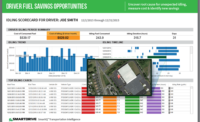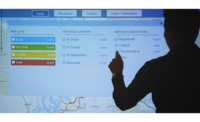Supply chain planning technology can enable food and beverage companies to reduce costs and mitigate risk. In fact, this technology is empowering global food and beverage companies to model, optimize and simulate supply chain network operations and correct inventory levels, leading to major improvements in cost, service, sustainability and risk management.
Once a slow-moving industry dominated by shelf life and inventory challenges, food and beverage manufacturing and distribution companies are facing a perfect storm of changing demand and customer expectations. At the same time, innovative products, producers and distribution models are quickly evolving to meet the challenge. As the mechanism that links supply and demand brings products into the hands of the consumers, the supply chain is at the eye of the storm. Supply chain agility, enabled by real-time data analytics, is critical for maintaining an effective response to radically changing market demands.
Being innovative isn’t just about creating new products. It’s about creating value. The value delivered to customers includes the physical products as well as the other 3 Ps—placement, promotion and price. While not traditionally distributed through e-commerce channels, food and beverage distribution networks are quickly moving in that direction, with new entrants like AmazonFresh and FreshDirect reinventing the space.
Food and beverage producers are now increasingly required to re-engineer their supply chains to operate in omni-channel distribution. Existing resources and management structures must adapt to serve multiple sources of demand to accommodate large quantity wholesale shipments and large numbers of small quantity consumer sales simultaneously. Success depends on striking the right balance between supply and demand. The right products must be in the right place at the right time – when and where the customer wants them.
By utilizing supply chain planning solutions, many firms are optimizing manufacturing and distribution by predicting demand with more certainty using daily and seasonal forecasting, replenishment planning, inventory optimization and promotional planning. Producers are utilizing Holt-Winters logic to pinpoint accuracy to demand plans with advanced statistical capabilities, combined with market knowledge gained from internal and external partner collaboration.
Food and beverage supply chain networks face some additional requirements not common outside of the industry as well. Many raw materials are agricultural, or harvested from nature, so availability is seasonal, quality, purity and strength may vary, and supplies may only be available from specific regions of the world at specific times of the year.
Because food and beverage products have a limit to their shelf life – adding another level of complexity to inventory control, distribution efficiency and coordination of supply and demand – careful supply chain management is critical. Integrated business planning solutions enable precise and appropriate scheduling, tighter inventory management, reduced logistical costs and improved visibility into planning, budgeting and forecasting.
According to a survey by McKinsey & Co., New York, “two in three CFOs say that their companies do not yet have the capabilities for agile decision making, scenario planning or decentralized decision making that are required to remain competitive in the coming years.”
Indeed, agility is essential to supply chain success in food and beverage insofar as it is often necessary to change production rates, alter product mix, introduce new products to market, penetrate new markets or redirect channel distribution.
The study suggests that firms utilize best-in-breed software solutions to systematize best practices and align goals across the enterprise. Supply chain planning software solutions can lay the framework for an agile supply chain that balances the determinants of supply and demand in a closed loop environment.
These software solutions offer a myriad of benefits to operators in the food and beverage industries:
Measure results with real-time data insights. Collect real-time data, such as attribute-level costing that factors in grade and market price, to best manage tight profit margins in the industry.
Manage multiple channels. Manage internal and external elements, including customer and distributor demands as well as ingredient availability. Utilize statistical forecasting methods to accelerate time to market and improves overall customer satisfaction.
Exceed food safety and recall management standards. Utilize alerting and rapid escalation technologies for early and quick detection of issues, and perform lot and/or sub-lot track and trace throughout the supply chain for quick recall identification.
Accelerate the global supply chain network. Leverage system automation to manage capacity and supply chain constraints, including shelf-life limitations, contamination risks and managing multiple plants and distribution centers. Planning technologies can also help to maximize tank utilization and increase throughout by intelligently sequencing lines, taking into account elements such as tank capacity, clean-in-process and flavor contamination.
Knowledge is power, and experts agree that the modern supply chain is highly dependent on real-time data insights to operate effectively and to adapt and capitalize on rapid market shifts. With supply chain planning technology, manufacturers can use these insights to spot risks, reduce costs and improve efficiency within their supply chains.


